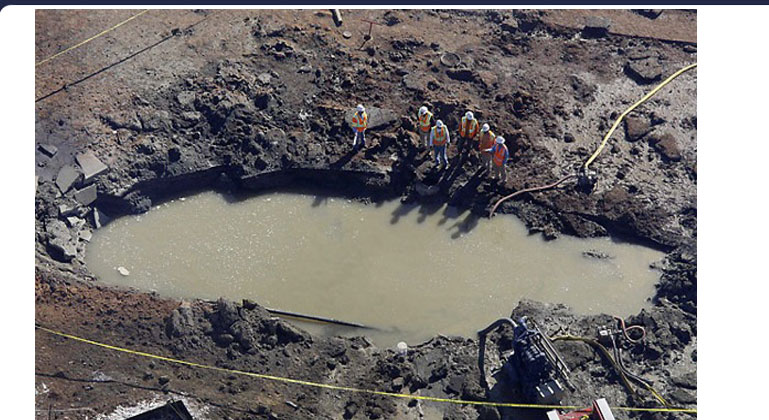




Impacts of Oort Comets Dislodged by the Brown Dwarf Companion Star
Raw Video: San Bruno Surveillance Cameras Capture Meteor Strike Followed by Fireball Detonation
by BG
September 13, 2010
Raw Video: San Bruno Surveillance Cameras Capture meteor strike followed by fireball detonation. At the 10 second mark of video a hail of space rocks located to the far left at the middle of the screen flurryb down then an explosion...
You can see the incoming flash from right to left at the top of the video on the left side about 6 to 10 seconds into the film. 0:29 something is jettisoned out of the flames... Incoming meteorite did this... and the result is a crater and a fireball from the gas main... And beyond doubts the crater shows it's Meteorite impact.
Analysis
This dramatic meteor impact event is one among a greatly increasing number of incidents connected with the invisible approach of the brown dwarf binary companion of our visible sun. The significant increase in cometary debris entering not only the atmosphere of Earth, but also causing giant explosions on Jupiter that have been recorded several times in recent months, can be understood in the context of the latest findings of the Binary Research Institute and in prior studies concerning Oort Comets:
The latest effort of Matese, Whitman and Whitmire studies 82 comets from the huge cloud of comets, called the Oort cloud, that exists around our solar system. They took the aphelia of these comets, the points on their orbit that are farthest from our Sun, and plotted them on a globe. Expecting to find an even distribution, they instead found that a particular band of sky, about one sixth the total, contained more than one quarter of all the comets, and that about 25 per cent of the comets coming from this cloud have anomalous paths. So what was affecting the orbits? They went on to theorise that the best explanation is the existence of a previously unknown body - that our solar system is made up of the Sun and a shadowy partner, either a brown dwarf or a massive planet, in a wide binary system. In effect, the solar system had two stars, the Sun and a dark companion, spinning around each other...
But it gets worse. Under their original theory, called the Nemesis theory, this small dark star, which lurks at around 90,000 times farther away than the Earth is from the Sun, may be on an orbit that, once every 30 million years, ploughs it into the densely packed inner cloud. Here its immense gravitational pull would drag out several of the Oort comets and give them the "kick" needed to send them towards the Sun on orbits perilously close to the Earth. This explains, in the professor's view, the ominous mass extinction cycle, due to regular periods of increased cometary activity every 30 million years.
Blakemore P (2002) 'Does the Sun Have a Doomsday Twin?' The Telegraph, October 18